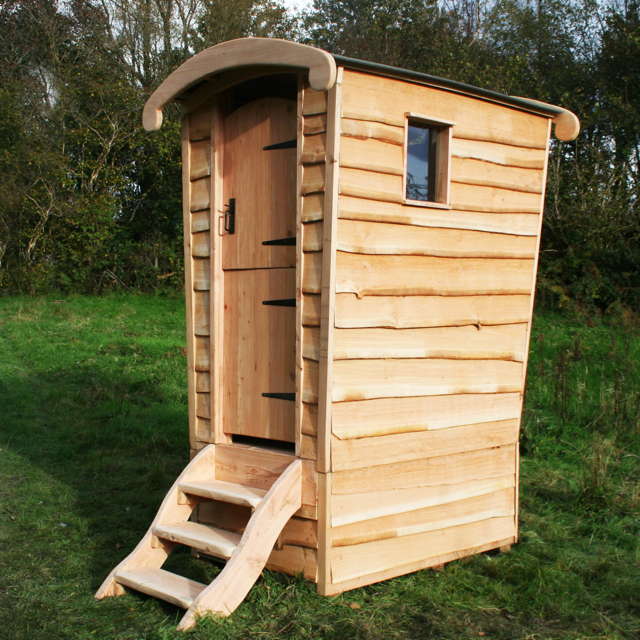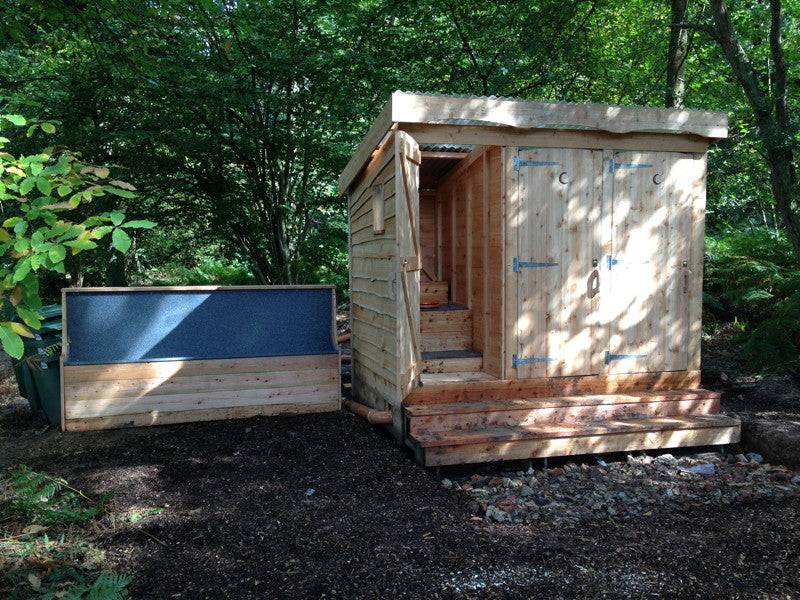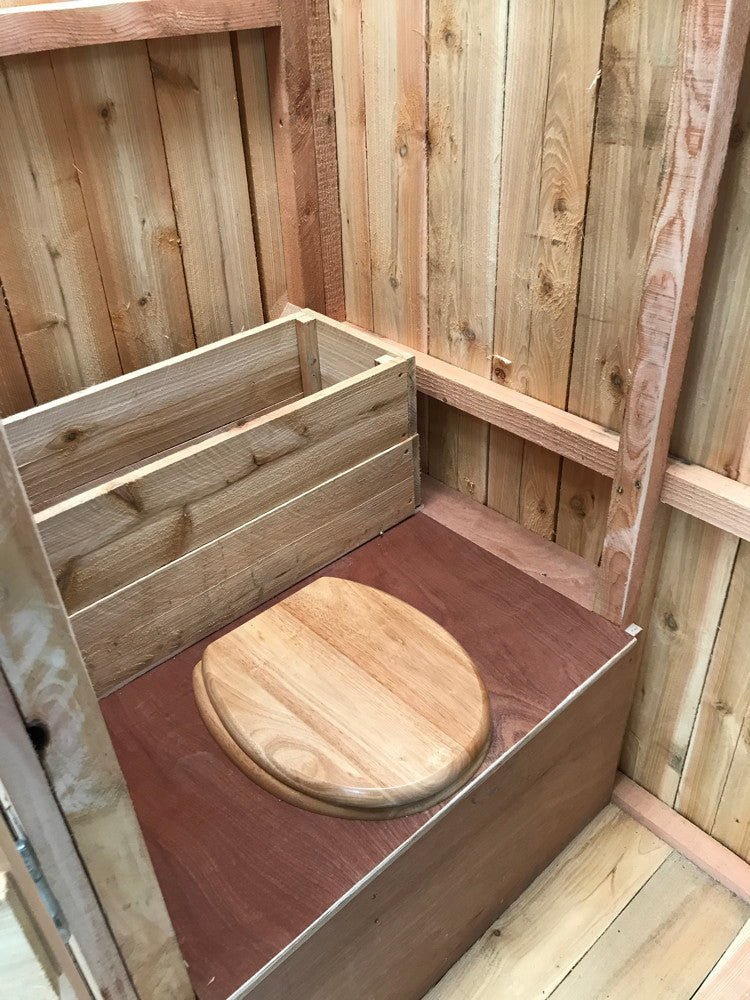Urine Separating
Keeping urine separate is usually the key to a successful composting toilet. Our toilets all come with a wee separator, which is used to divert the urine away from the solids into a separate container or soak away. This keeps the solid waste odour free and optimises the composting process. For the process to work aerobically, moisture levels need to be controlled: too dry, and the mass decomposes slowly or not at all; too wet and anaerobic organisms thrive, creating undesirable smells.
We developed the urine separator ourselves when we weren’t able to find a suitable product anywhere else. It is designed to fit standard piping and attachments and is made from recycled plastic. It slides in under the toilet seat platform and is easily removed for cleaning.
Free Range Loos
Here at Free Range Designs we've been researching and developing the optimum design of compost toilet for a number of years and have now come up with a range of compost toilets for sale designed to be simple to use and easy to maintain. These include bespoke and ready-made composting toilets to suit all budgets and locations, from the most simple and affordable Portable Composting Box, to the beautiful high-spec Timber Arc Toilet.
The common feature of all our toilets is urine separation, which is the key factor for successful odour-free composting. For collecting the solids, our designs include a range of solutions, from the basic bucket to the common wheelie bin, and recycled plastic twin chambers.
Compost Toilets for Sale
The Wheelie Bin System
Many of our ready-made composting toilets feature the ubiquitous wheelie bin – an innovative and hassle free system for composting human manure. Using a wheelie bin may at first sound strange, but if we were to hire a team of designers to come up with the perfect receptacle to hold humanure then after two years and a huge budget they would come back with the wheelie bin!
Once you have filled your first bin then you replace it with a second bin. When this is full, you empty the first bin (which should have started to compost nicely by now) into a standard garden 1m x 1m compost box that allows the air to circulate and aerobic composting to happen more rapidly. Here the final stage of the compost process happens for up to a year. Each subsequent bin is added on top. The waste is reduced from 100% solids to 6% in one - two years.
The advantage of the wheelie bin system is that you can rotate the bins as quickly as they fill up. More people means more bins. On average, using the composting toilet everyday, it takes one adult 150 days to fill up a bin. So a group of six people would fill a bin in about 25 days, and a group of 15 people would fill a bin in about two weeks. If the toilet is used only occasionally, it will take much longer to fill the bin.
Twin Chamber Compost Toilets
This system uses a large rectangular box made from recycled plastic that is divided into two compartments: one for current use and one for resting and composting. There is a urine diverter inside that pipes the liquid into an external 25 litre container or soak away, depending on your situation.
There are two large hatches at the back of the box to empty from, and a vent pipe. Each chamber has a larger capacity than the wheelie bin, which has the advantage of needing to empty it less often, although it is not as easy to empty as the bin. However, by the time you come to empty a full chamber, the solids should have turned into odourless compost and not be unpleasant to handle.
Here is our Twin chamber Compost Toilet for Sale

Plans to build your own DIY Compost Toilets
Over the years we have built hundreds of toilet and can now offer you our plans for you to build your own compost toilet using our experience. All plasn come in a pdf format and have everything you need to get going straight away.



















